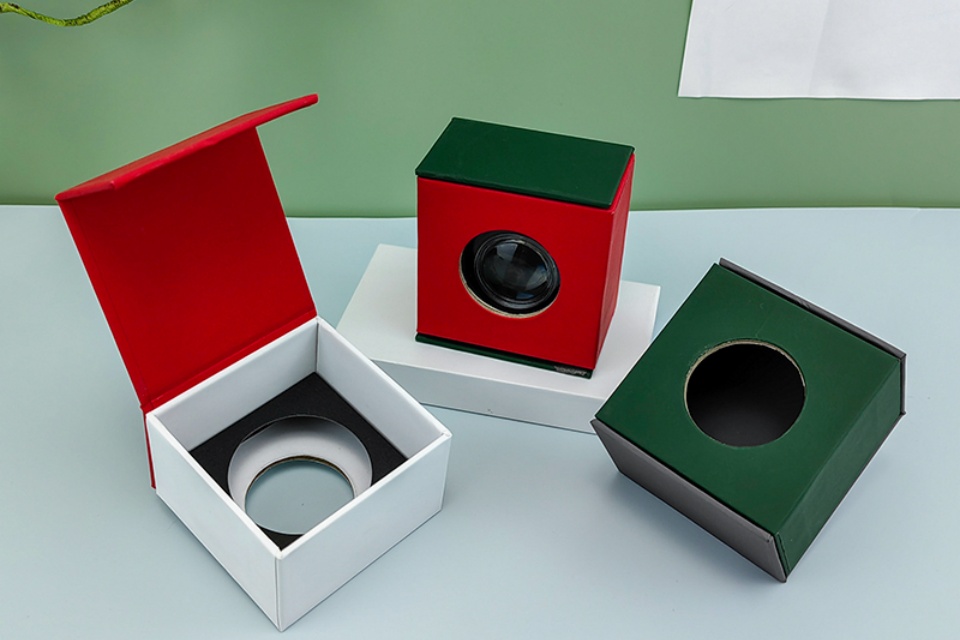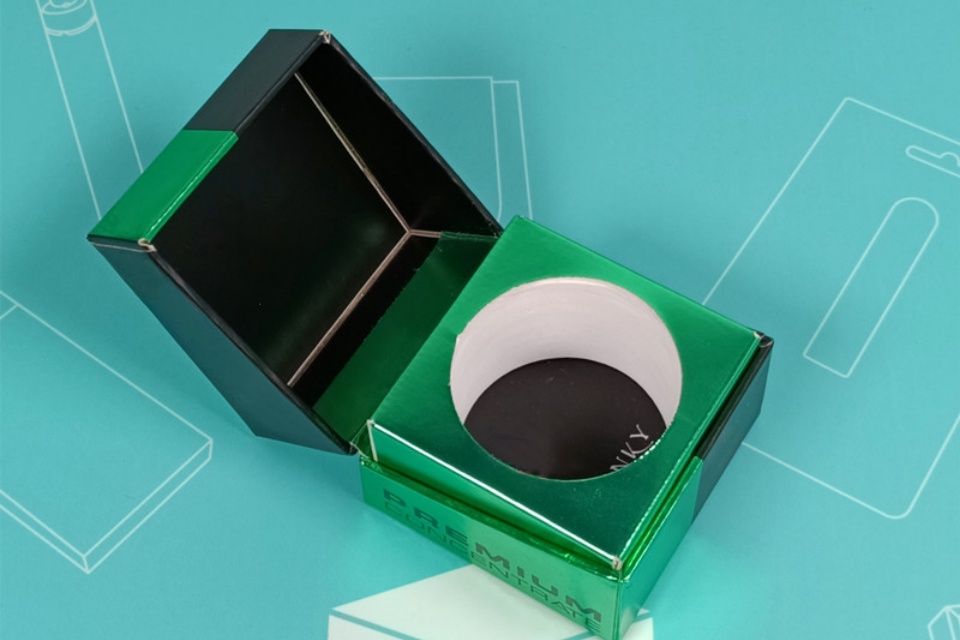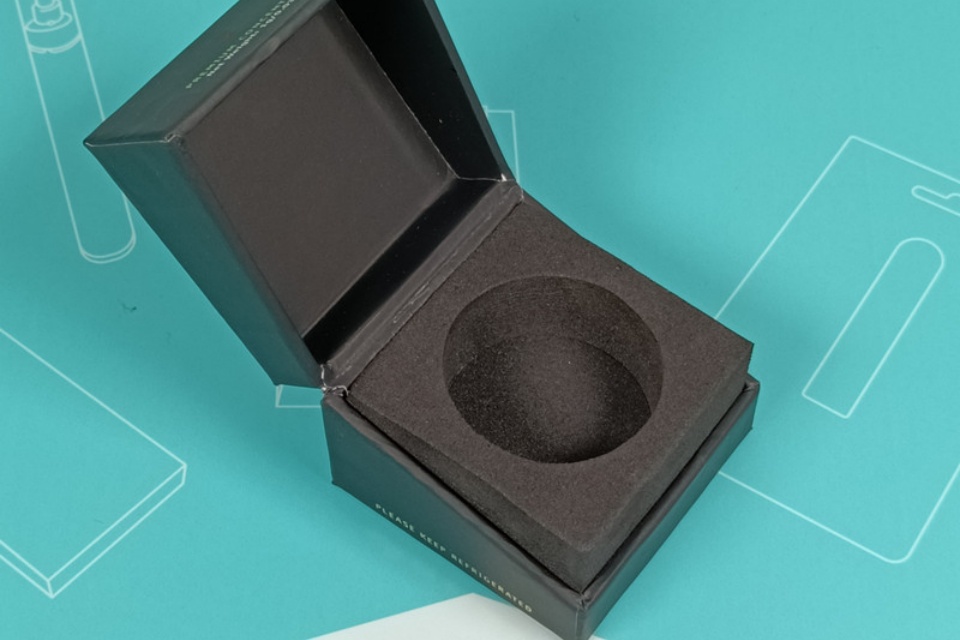Packaging Solutions For Cannabis Concentrates
Packaging Solutions For Cannabis Concentrates
Summary
Packaging solutions for cannabis concentrates refer to the various methods and materials used to store and protect potent extracts derived from the cannabis plant, such as shatter, live resin, and wax. These concentrates contain higher levels of cannabinoids and terpenes than traditional cannabis buds, making them increasingly popular among consumers seeking enhanced effects and flavors. The importance of appropriate packaging extends beyond aesthetics; it encompasses compliance with legal regulations, consumer safety, and the preservation of product integrity. As the cannabis market grows, so does the demand for innovative and sustainable packaging solutions that meet both consumer expectations and environmental standards.
The notable challenges in packaging cannabis concentrates include ensuring child resistance, preventing contamination, and providing tamper-evident solutions. Legal requirements vary by jurisdiction but generally mandate that packaging must be opaque and secure to protect against accidental exposure, particularly for edible products. Additionally, many states enforce strict labeling regulations, which necessitate clear communication of potency and safety information on packaging. The potential for brand differentiation through unique design and materials has led to increased creativity in the packaging of cannabis products, aligning brand identity with consumer values.
Sustainability is also becoming a critical focus within the cannabis industry, prompting companies to explore biodegradable and eco-friendly materials for packaging. Innovations such as reusable containers and smart packaging technologies are emerging trends that cater to environmentally conscious consumers and enhance product transparency. The growing emphasis on sustainability reflects a broader shift in consumer behavior, where many are willing to make purchasing decisions based on a brand's commitment to reducing environmental impact.
In summary, packaging solutions for cannabis concentrates play a pivotal role in ensuring product quality, regulatory compliance, and consumer safety. As the market continues to evolve, brands that prioritize innovative, sustainable, and compliant packaging will be better positioned to succeed in an increasingly competitive landscape.
Types of Cannabis Concentrates
Cannabis concentrates are potent extracts derived from the cannabis plant, containing a higher concentration of cannabinoids and terpenes than traditional cannabis buds. They come in various forms, each characterized by its unique texture, consistency, and method of extraction. The most common types of cannabis concentrates include shatter, live resin, crumble, wax, dabs, hash, and budder.
Shatter
Shatter is a brittle concentrate that resembles glass and is known for its high potency. It is often packaged in small, rectangular containers to ensure easy storage and transport. Standard packaging for shatter typically features a tuck top design, which allows for convenient opening and resealing. Due to its delicate nature, shatter requires airtight sealing jars to protect it from light, heat, and air, ensuring the product remains fresh and potent over time.
Live Resin
Live resin is a highly sought-after concentrate known for its high terpene content, which enhances the flavor and aroma of the cannabis. This concentrate is produced using fresh cannabis flowers that are flash-frozen before extraction. Packaging options for live resin often include pop-top containers that mimic the appearance of glass jars, providing a user-friendly experience while ensuring product integrity.
Crumble
Crumble, also known as honeycomb, has a crumbly texture and is typically made by purging butane from cannabis extracts. It is often packaged in small, durable containers that can hold approximately one gram of the concentrate. High-quality packaging is essential to maintain its freshness and prevent contamination. Custom printing options on crumble concentrate boxes can enhance their visual appeal, attracting consumers.
Wax
Cannabis wax is a gooey concentrate that can vary in appearance from sugar-like crystals to a sticky, amber substance. It is vital for wax products to have protective packaging to prevent contamination and breakage. Packaging solutions for wax concentrates often include glass jars or durable plastic containers, which ensure the product remains safe during storage and transport.
Dabs and Hash
Dabs refer to any type of cannabis concentrate that is vaporized and inhaled, while hash is made from the resin of cannabis plants. Both forms require specific packaging to maintain their potency and flavor. Airtight containers are commonly used to protect these concentrates from degradation, ensuring a quality experience for consumers.
Budder
Budder is a creamy, whip-whipped concentrate that retains moisture and has a soft texture. Its unique consistency makes it important to choose the right packaging to prevent it from drying out. Many producers opt for glass jars or silicone containers, which provide an airtight seal and easy access for users.
Packaging Requirements
Packaging for cannabis concentrates must adhere to a variety of regulations aimed at ensuring consumer safety and product integrity. These requirements can vary significantly by state, but several key principles are universally recognized.
General Packaging Criteria
All packaging must be designed to keep the product fresh, secure, and compliant with legal standards. Common packaging types for cannabis concentrates include jars, Mylar bags, tubes, and other containers. Additionally, packaging must be child-resistant, tamper-evident, and opaque, particularly for edible products. It is essential that the packaging does not impart any toxic or harmful substances to the cannabis products contained within.
Regulatory Compliance
Licensees are required to fully understand and apply the relevant product, packaging, and labeling laws as outlined in state regulations such as RCW 69-50 and WAC 314-55. States like California have instituted stringent laws mandating child-resistant and tamper-evident packaging for cannabis products, particularly edibles. Furthermore, manufacturers must comply with labeling requirements, including potency statements and universal symbols indicating the presence of marijuana.
Sustainable and Innovative Solutions
Sustainability in packaging is increasingly emphasized within the cannabis industry. Innovations in non-petroleum-based packaging materials, such as those derived from hemp, mycelium, and other renewable resources, are being explored as alternatives to traditional materials. The goal is to reduce waste and environmental impact, which aligns with the broader movement towards sustainability in product packaging.
Specific Requirements for Edibles
When it comes to packaging cannabis edibles, strict guidelines are in place to protect against contamination and accidental exposure to minors. For solid cannabis edibles, the packaging must be child-resistant and comply with federal regulations such as the Poison Prevention Packaging Act. Additional requirements may include the use of thicker plastic and heat sealing to prevent unauthorized access.
Importance of Tamper-Evident Packaging
Tamper-evident packaging is crucial for maintaining consumer trust and ensuring product safety. Effective tamper-evident solutions include the use of shrink wrap and secure seals that provide a visual indication of whether a product has been opened prior to purchase. This feature not only protects the product but also helps in achieving regulatory compliance.
Packaging Materials
The choice of packaging materials for cannabis concentrates is crucial for maintaining product quality, enhancing consumer experience, and adhering to legal requirements. Several materials have emerged as preferred options due to their unique properties and sustainability potential.
Glass
Glass is widely regarded as one of the best materials for packaging cannabis concentrates. It is non-reactive, ensuring that the concentrates maintain their potency without chemical interaction. Glass containers, particularly airtight jars, provide an excellent barrier against air and moisture, thereby preserving the integrity of the product. Additionally, glass is reusable and recyclable, aligning with increasing consumer demand for sustainable packaging options. Brands often utilize various sizes of glass jars to accommodate different quantities of concentrates, offering a sophisticated presentation that appeals to premium market segments.
Silicone
Silicone containers are gaining popularity, especially for sticky concentrates like wax and budder. The non-stick surface of silicone makes it easy for consumers to access the product without leaving residue behind, enhancing user satisfaction. Furthermore, silicone is durable, reusable, and food-grade, making it a safe option for storing cannabis products. Although silicone containers can accumulate dirt easily, they can be produced in various colors, including glow-in-the-dark options, to help brands stand out.
Metal
Metal containers, such as aluminum tins, serve as effective packaging solutions for solid concentrates like shatter. These containers are robust, airtight, and often feature a sleek design that appeals to consumers looking for durability and aesthetic appeal. Additionally, metal provides an effective barrier against odors, which is essential for maintaining product quality and discretion.
Biodegradable and Sustainable Materials
With the growing emphasis on sustainability, there is a push for the use of biodegradable and eco-friendly materials in cannabis packaging. Options such as hemp bioplastics, recycled paper products, and plant-based polymers are being explored for their lower environmental impact. Hemp, in particular, has been highlighted as a versatile and sustainable alternative, offering strength and reducing reliance on traditional plastic materials.
Specialized Packaging Solutions
Different types of cannabis concentrates may require specialized packaging to ensure freshness and quality. For instance, parchment paper is often used for short-term storage of crystalline concentrates, while custom-designed packaging can enhance brand recognition and appeal. The use of activated charcoal and special liners or coatings can also help to trap odors, providing additional benefits for odor-sensitive products.
Design Considerations
Designing packaging for cannabis concentrates involves a careful balance of aesthetics, functionality, and regulatory compliance. Packaging not only serves to protect the product but also plays a crucial role in establishing brand identity and attracting consumer attention in a competitive marketplace.
Branding and Consumer Appeal
Creative and eye-catching designs are essential for differentiating products on dispensary shelves. Effective branding strategies utilize graphics, colors, and typography to create a visual identity that resonates with the target audience. For example, medical cannabis products typically require a professional and trustworthy appearance, while recreational products may adopt a more playful and engaging style. Consistency in branding across different product lines enhances brand recognition and loyalty among consumers.
Compliance and Safety
Navigating the complex regulatory landscape surrounding cannabis packaging is paramount. Regulations often dictate that packaging must include child-resistant features, clear labeling of product contents, and safety warnings to ensure consumer safety. Compliance with these regulations is essential, as non-compliance can lead to significant legal repercussions and impact consumer trust. Effective packaging design incorporates necessary compliance elements without sacrificing creativity or brand identity, allowing brands to communicate their values and commitments effectively.
Material Selection and Innovation
The choice of materials for packaging cannabis concentrates is crucial for product integrity and brand perception. Brands are encouraged to utilize sustainable materials and innovative design solutions that align with consumer expectations for eco-friendly products. Additionally, advanced packaging technologies can enhance both the protective qualities and visual appeal of the packaging, ultimately safeguarding product quality while reinforcing brand authority.
Communicating Product Information
Providing clear and accurate information on cannabis packaging is vital for building consumer trust and ensuring safe usage. Labels should include details such as strain type, potency, ingredients, and usage instructions, as well as health warnings. This transparency not only enhances consumer confidence but also contributes to a responsible branding strategy that prioritizes consumer education and safety.
Innovations in Packaging Solutions
Smart Packaging Technologies
The integration of smart packaging technologies, such as QR codes, NFC tags, and RFID, is transforming the cannabis concentrate market by enhancing consumer engagement and improving supply chain efficiency. These technologies enable brands to provide detailed product information, verification tools, and educational content, which are particularly valuable for consumers of premium concentrates who seek transparency regarding extraction methods and terpene profiles. As the market matures, packaging solutions will need to balance regulatory compliance, product protection, and user experience while adapting to evolving consumer preferences.
Sustainable Packaging
Sustainability has become a critical factor in packaging solutions, as consumers increasingly favor eco-friendly options. Brands are now utilizing materials like recyclable glass, biodegradable plastics, and FSC-certified paper, which not only reduce environmental impact but also resonate with consumer values. Innovative solutions, such as reusable glass containers and compostable packaging made from materials like wood pulp and rice husk, are gaining traction among companies looking to minimize waste while maintaining product integrity. This trend reflects a broader shift in consumer preferences, with studies indicating that many consumers are willing to make purchasing decisions based on a company's commitment to sustainability.
Customization and Brand Differentiation
Custom packaging is vital for standing out in crowded dispensary shelves, particularly in the concentrate segment where quality perception is paramount. Tailored packaging solutions help build brand recognition and communicate product value while showcasing professionalism. Features like child-resistant designs, unique aesthetic elements, and functional aspects (e.g., resealable options) can significantly enhance the overall product experience for consumers who invest in high-quality cannabis products. Companies that prioritize customized, innovative designs not only enhance consumer trust but also drive sales growth in a competitive market.
Future Trends in Cannabis Packaging
Looking ahead, the cannabis packaging industry is expected to see increased incorporation of advanced technologies such as augmented reality (AR), which could provide consumers with interactive experiences related to the product. As consumer expectations evolve, the continued emphasis on sustainability, smart packaging solutions, and unique branding strategies will be essential for success in this dynamic and rapidly expanding market. Brands that proactively address these trends will be better positioned to meet consumer demands and navigate the complexities of the cannabis industry.
Case Studies
Innovative Packaging Strategies
Packaging plays a crucial role in the cannabis industry, particularly for concentrates, where consumer expectations for quality and aesthetics are high. One notable case is Calyx's use of glass containers designed with sustainability in mind. Their containers are reusable and recyclable, meeting consumer demands for eco-friendly packaging while ensuring product performance. This approach not only addresses environmental concerns but also aligns with the growing market for concentrates, where premium packaging can elevate brand perception and customer loyalty.
Branding and Consumer Engagement
Another successful example is Custom Packaging Company (CUSTOMPACKCO), which emphasizes the importance of custom packaging in differentiating products on dispensary shelves. They provide a comprehensive service that includes design, prototyping, and logistics, allowing brands to present a cohesive image. By ensuring that packaging reflects a brand's identity, they help companies communicate product value and professionalism. Such strategies are particularly vital in a competitive market where first impressions can significantly influence purchasing decisions.
Market Response and Adaptation
In response to consumer insights, brands are increasingly focusing on creating packaging that not only protects the product but also enhances the overall user experience. This includes incorporating features such as clear visibility to allow consumers to see the product without opening the packaging, which can affect their buying choices. A well-thought-out design can thus serve as a critical touchpoint, engaging consumers and reinforcing brand loyalty.
These case studies highlight the evolving nature of cannabis concentrate packaging and underscore the importance of innovation, sustainability, and consumer engagement in driving brand success within the industry.



